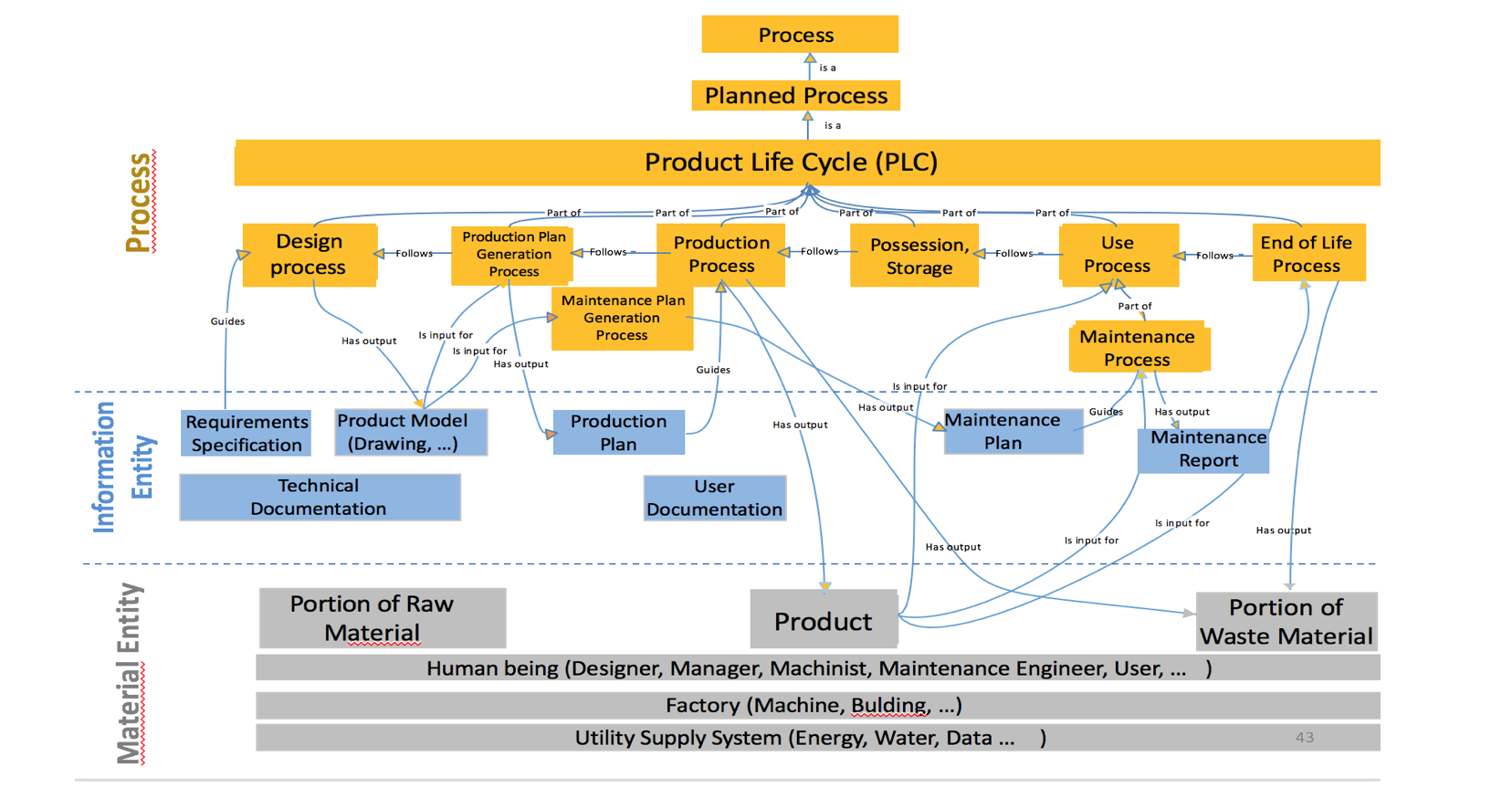For the last year, while working on my dissertation, I have been serving as UB project manager for the CHAMP project–an industry project generously funded by the Digital Manufacturing and Design Innovation Institute (DMDII). The goal of the project is to create a suite of modular ontologies that represent the domain of manufacturing across the product life cycle. Implemented in turtle, such ontologies may later be combined à la carte, allowing small and mid-sized companies, their suppliers, and their customers to plan out their long term data integration needs. Such data integration is a billion dollar task and requires companies to continually hire specialists who design custom systems at cost (and which need updating). By contrast, at the end of our project, all files will be made available to the public, along with documentation. Companies can then download and extend them for free.

Such practical, industry work may seem as far away from academic philosophy as one could get, but that isn’t true. While working on this project, my colleagues and I have had to tackle a host of philosophical issues, issues such as: how best to taxonomize artifacts, how to define the persistence conditions of portions of material (as opposed to mere objects or object aggregates), how to think of material functions and dispositions, how to treat design specifications and simulation models within a realist ontology framework (i.e. within Basic Formal Ontology), and the social ontology of organizations, deontic relations, and social roles.
There are a number of industry ontology projects going on right now and I am learning about others all the time. What makes ours unique, I believe, is that it is guided by the insights taken from the creation of the Open Biomedical Ontology Foundry. This ongoing project supports open, social, expertly curated ontologies in biomedical science, and has led to a series of principles and practices, honed by experience, that have been instructive for this project. Too many other ‘ontology’ projects really seem like exercises in semantic technology applications, since they are not interested in ontology per se, but rather in designing a one-off application that succeeds in one particular area. We are interested in creating models that can be re-used, and this requires a series of constraints others aren’t thinking about. Some of these constraints come from the new world of open data (e.g. collaborative design and open access), but others require drawing from expertise in other areas, for instance: analytic metaphysics, logic, mereotopology, social ontology. In this regard, having a good theory is the most practical advantage one can have.